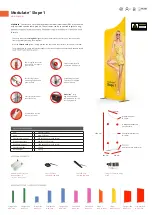
23
○
○
○
○
○
○
○
○
○
○
○
○
○
○
○
○
○
○
○
○
○
○
○
○
○
○
○
○
○
○
○
○
○
○
○
○
○
○
○
○
○
○
○
○
○
○
○
MU10 Overview and Features
■
Effect Types
The MU10 features dozens of extremely versatile
digital effects generated by Yamaha’s advanced
Digital Signal Processing (DSP) technology—
which add a completely new dimension to your
MU10’s sound.
There are three distinct effect types, or effect
sections, each of which include a variety of
individual effects. There are 11 Reverb type
effects, 11 Chorus type effects, and 43 Variation
type effects. For a complete list of effects, see the
Effect Type List on page 50.
These effects are configured, or routed, in one of
two ways—to be either a System Effect or an
Insertion Effect. The difference is as follows:
• SYSTEM EFFECT
- Applies the designated effect to all 16 Parts.
• INSERTION EFFECT
- Applies the designated effect to only one specific
Part.
Reverb and Chorus effect types are dedicated
System Effects, and therefore are applied to the
overall “mix”. The Variation effect type, however,
can be configured as either a System Effect or an
Insertion Effect. To designate effect types and
parameter values via MIDI messages, see XG
Native Parameter Change, page 30.
* Effects can be applied to A/D Input Sources as
well as the internal voices of the MU10.
■
16 bit A/D Input x 2
The MU10 features A/D INPUT 1, 2 jacks for
connection of external audio sources such as a
microphone, guitar, bass, or CD player.
Audio signals received via A/D INPUT 1 and 2
jacks are mixed to one part, then processed
through the effect sections and mixed with the
internal voices of the MU10. (See “Using the A/D
INPUT Function” on page 18)
Summary of Contents for MU10
Page 1: ...3 ...
Page 64: ...2 M D G EMI Division Yamaha Corporation 1996 ...
















































